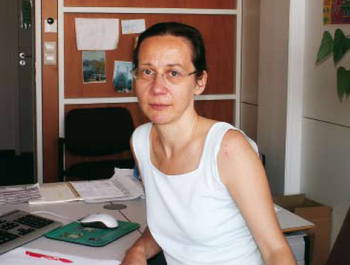Archive:Industrial producer prices: a pillar of short-term economic statistics
- Published in Sigma - The Bulletin of European Statistics, 2007/02
In many European countries, measuring the price of industrial products has been done for more than 20 years. Germany, the United Kingdom and Sweden had a domestic producer price index even earlier — by the late 1940s, 1950s and 1960s respectively. To statisticians this index is known as the producer price index (PPI). In the industrial sector, the PPI is one of the pillars of short-term economic analysis together with the production index and employment indicators.
Introduction
The producer price index seeks to measure the monthly change in the selling price of products on the domestic market and the nondomestic market.
The data collection at the European level is the outcome of the short-term statistics (STS) regulation which was adopted in 1998 and amended in 2005. In many countries, the 1998 STS regulation was the legal basis for developing the non-domestic market PPIs — sometimes called export prices index as well. In parallel to the adoption of the legal texts, Eurostat, with the help of Member States, has developed a methodological guide to ensure a common methodology for all STS indicators.
The PPIs permit monthly monitoring of prices at different stages of the manufacturing process. They are also a means of distinguishing real growth of the activity from price changes for the national accounts and index of industrial production. They provide information to the business community on particular markets of interest to them.
Essential to national accounts and business
In the industrial sector, prices are used as an output indicator for the seller and as a cost factor for the buyer. In many countries, there is quite an important demand for these PPIs from the business and trade organisations. As these indices have existed for some decades already, they are part of the economic life for national accountants and businesses. Therefore they have to be maintained by the national statistical institutes at quite a detailed level. Even if medium-sized and small countries are not obliged to transmit detailed PPIs, many of them do calculate them anyhow to satisfy national demand.
Challenge ahead is to rationalise
Because of the decrease in the share of the industrial sector in favour of the services sector in the economy in recent years, the challenge is to rationalise the collection and calculation procedures in the Member States for the industrial PPI and to take advantage of the experience of the industrial PPIs when developing the indices for services prices.
Dealing with evolving products
foto In many countries, there is a strong demand for PPIs from the business and trade organisations. As these indices have existed for some decades already, they are part of the economic life for national accountants and businesses. Photo: European Commission
In the regular collection process, one key issue is to measure the price of the same product over time. In many industrial sectors, the products evolve very quickly. Therefore methods to deal with the change of product and the quality adjustment are crucial. The aim is to measure more accurately which part of the price development comes from a quality change, leaving the other part of the price development to a real price change.
Methods used to treat this issue range from simple models, such as the ‘overlapping method’ (where the price difference recorded on the market between two successive products is totally attributed to the quality effect) or an unadjusted price comparison (where it is assumed that there is no quality change) to more complex ones, such as option prices and hedonic adjustment models.
Most of the industrial products are clearly specified products for which the price is observed for each collection period. Only a few industrial sectors have tailor-made products: structural metal products or railway locomotives for example. These tailor-made products require more sophisticated pricing methods such as model pricing.
